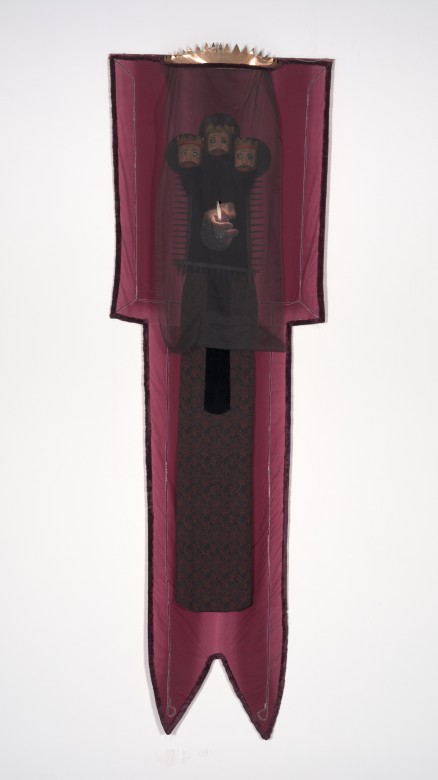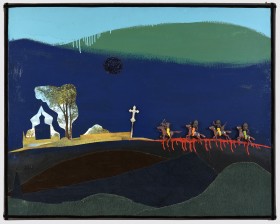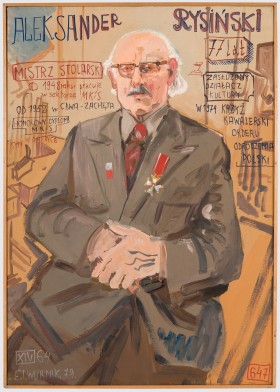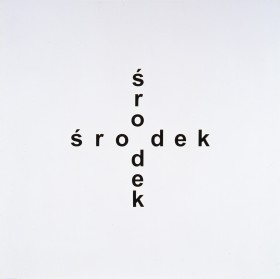Dynastic Banner
- type of object: painting
- date: 1974
- dimensions: 410 x 130 x 25 cm
- inventory No.: M-120
It is a fabric inlaid with various objects, so it may be described as an assemblage. Banners are usually associated with the identifying mark of a military branch, association, city, school or institution, and also have religious connotations. The described object is also rooted in folk rituals and resembles a church processional float or roadside shrine. The banner is unfurled in a solemn moment — for an artist, the presentation of their work in an art gallery is such a moment . Hasior was primarily interested in the banner as an element of a performance imitating a national or religious holiday (especially in the context of communist reality), taking place outside the gallery space. Therefore, photographic documentation of the action seems to be an indispensable supplement to this object. His banners often carry a charge of humour, as in this case — the dynasty is presented in the form of three heads carved in a folk style. The theme of the work is lofty, but the materials are cheap and perishable: plush and lace. Another part of the assemblage is a photo of a hand with a lighter, which links this work to the Burning Banners show in Drawsko Pomorskie (1979) and Nowy Sącz (1988, 1992).
The banner is one of the hallmarks of Hasior’s art — he created works of this type from the mid-1960s through the next two decades. He was interested in it as a beautiful object, an artistic form, rather than a symbolic element. Initially, the artist wanted to mock tradition, but soon succumbed to the magic of the solemn nature of the object. He dedicated banners to real and fictional characters, concepts or events, as evidenced by the titles: Protective Banner (1968), Holiday Banner (1968), Banner of Blue Hope (1969), Romeo and Juliet (1969), Yma Sumac (1970), Banner 8 — Left (1970), Banner of Ecstasy (1970s), Banner of the Black Angel (1970s), Banner of St Pensioner (1971), Protector’s Banner (1971, 1974), Hubert’s Banner (1981), Ophelia’s Banner (1981), Mona Lisa’s Banner (1981), Delegate’s Banner (1983), Banner of the Blue Master J.D.G. (1991), Banner of Icarus (1992), Banner of the Lady of the House (1992).
Karolina Zychowicz
translated by Paulina Bożek






